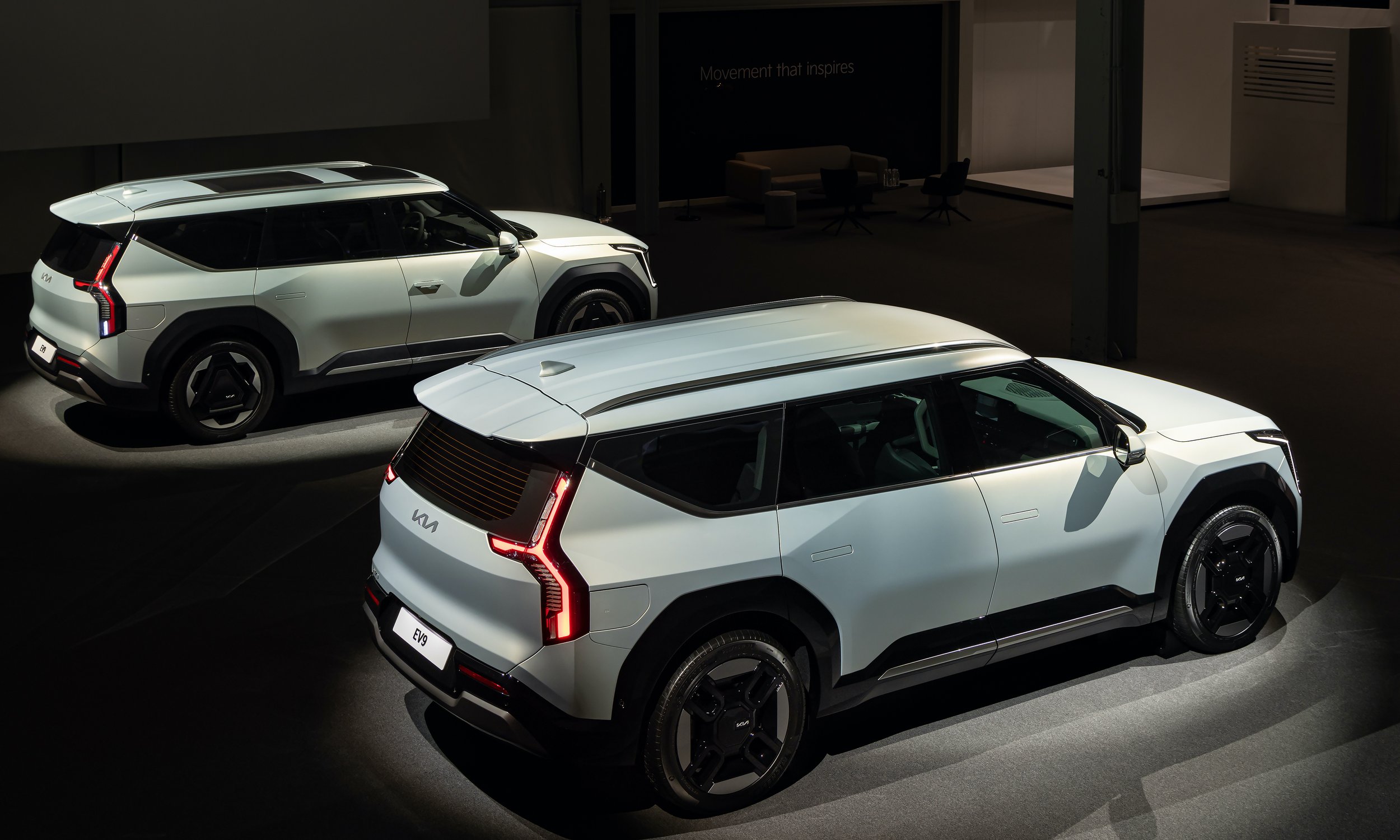EV9 seven figure in price and seat count
/The electric equivalent of the erstwhile Carnival is a much more expensive ride and seats one fewer occupant.
GOING large on family hauling in the Kia range will cost significantly more with electric than it does with another car in the brand’s local line-up doing the same job, but with a diesel engine.
It will also reduce the maximum occupancy count by one.
Pricing announced today for the Kia EV9 electric seven-seater which bases on the same E-GMP platform as Kia’s EV6 and several models from Hyundai, whose parent runs Kia.
Hyundai’s equivalent, a twin under the skin to the Kia, is the Ioniq 7, which is also incoming yet whose local role has yet to be detailed.
Auckland-based Kia NZ has three variants - just as it does for the Carnival, the fossil fuel equivalent in the multi-seat family wagon role it has been selling for years.
Entry to the battery-driven experience reminds that going full electric, in a high-end and high-tech setting comes at a cost.
Going EV9 asks for a seven figure outlay and the gap between the cheapest EV9 and the dearest Carnival is $30,050.
The least expensive EV9 is the Light rear-wheel-drive SR variant, likely with a 160kW/350Nm single motor, that features a 76.1kWh lithium-ion battery, for $105,990.
The next step up is the $115,990 Earth all-wheel-drive in LR trim, which has a 99.8kWh lithium-ion battery feeding two electric motors, with combined output of 283kW and 600Nm.
The top spend model is the GT line, which has the same drivetrain and performance credential, for $134,990.
The buck might not ultimately stop there. A high-performance EV9 GT is on its way, but Kia headquarters says the variant won't be launching until early 2025.
Kia NZ has not disclosed full specifications, saying these will be announced closer to its local launch.
It will only so far shared that all models have as standard a suite of active and passive safety features, a “wide array” of airbags, LED headlights, a heated steering wheel and front seats, a 12.3-inch infotainment touchscreen, and a 12.3-inch gauge cluster for the driver.
With cars like this, what’s equally crucial is how many will fit aboard.
EV9 configures with six or seven seats. The higher count is one less than the Carnival, which though smaller in exterior dimension and inside is nonetheless considered commodious within its category.
The latter runs a 2.2-litre turbodiesel, making 148kW and 440Nm, has a cited economy of 7.5 litres per 100km and, because CO2 count is 198 grams per kilometre, all variants carry a $3335 Clean Car penalty.
Carnival costs $60,440 in entry EX, rises to $70, 940 in mid-grade Deluxe and tops at $75,940, for the Premium.
Technical specifications announced in March by Seoul revealed the most efficient EV9 is a single motor on 19-inch wheels, the smallest wheel size (its also on 20s and 21s). This version will get up to 541 kilometres of driving range on a single charge.
That’s one kilometre above the cited range of a Carnival, assuming it also registers the factory claimed economy of 7.5 litres per 100km, from its 72 litre tank, which at today’s price might cost around $160 to fill from empty. Diesel also carries a road user charge, but clearly the premium between the top line Carnival and least pricey EV9 equates to years of running.
EV9 stands to be a head-turner. For one, it’s large in measuring 5010mm long, 1980mm wide and 1755mm tall (1780mm tall on the GT-Line) on a 3100mm wheelbase.
For another? Well, look at it. Though some more extrovert design elements of the 2021 Concept EV9 show car did not make the showroom – there are now traditional headlight clusters, the rear-hinged second-row doors have been ditched, there are pop-out door handles, and full-sized side mirrors - the model is far more extrovert than the Carnival.
One party trick from the concept carried into production is the ability to swivel the second-row chairs in six-seat versions by 180 degrees to "interact with those sitting in the third row”. The alternate to the two mid-row captains’ chairs is a bench seat.
In the plushest setting, the first and second-row seats can also recline. Third-row occupants have access to USB charging points, cupholders and air vents.
GT-Line is engineered with a Level 3 autonomous driving feature, called Highway Driving Pilot, which allows the driver to temporarily take a break from controlling the vehicle where conditions permit. The system employs 15 sensors, including two LiDAR units, for a 360-degree view of the vehicle’s environment. A hands-on detection sensor is employed “to ensure driver engagement”.
However, the factory has been indicated that capability is purely for the home market at the moment.
That might also be the case for Kia’s Remote Smart Parking Assist 2, which allows the EV9 to park itself regardless of whether the driver is inside or outside the vehicle, provided they have the Digital Key 2 smart key. The system in turn controls the accelerator, brakes and gearshift.
In a first for Kia, the Digital Key 2 uses ultra-wide band technology which allows owners to open and start their car using their smartphone, even when the key is in their pocket or bag.
The car also plays up its eco credential with trims that use a mixture of 'vegan' (synthetic) and recycled materials, mainly derived from more than 70 plastic bottles and discarded fishing nets.
A feature of the cabin is the pair of 12.3-inch screens have been used for the digital instrument cluster and infotainment controls, along with a 5.0-inch display for heating and air conditioning.
The EV9 offers 800V ultra-fast charging capability like other vehicles on the E-GMP platform, and Kia says 239km of range can be added in 15 minutes.
It can also be used to power appliances thanks to a Vehicle-to-Load (V2L) function, which puts out up to 3.68kW of power.


















